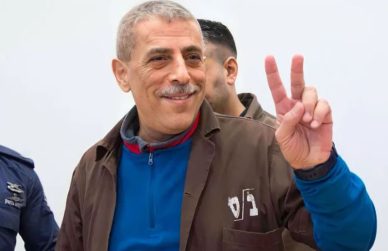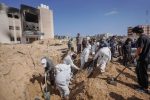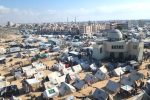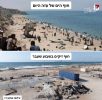BEIRUT, (PIC)
A position paper issued by the Al-Quds International Institution has confirmed that the Al-Aqsa Mosque is surrounded by three threats during Ramadan.
The paper, prepared by Jerusalem affairs specialist Ziad Abuhijleh, elaborated that the first threat lies in the sustainability of the siege imposed on Al-Aqsa for the past six months, with the Israeli occupation authority (IOA) attempting to turn it into a continuous blockade.
It pointed out that the second threat lies in the renewal of the Torah festivals, which the IOA uses as a platform for aggression against the Al-Aqsa Mosque, and which will begin on March 21st, coinciding with the second week of Ramadan.
As for the third threat, according to the paper, it is the provision of all the prerequisites for imposing the ritual of purifying with the red heifer to increase the number of settlers invading Al-Aqsa, considering it a sign of the arrival of the redeemer. This ritual, according to Talmudic sources, is said to be scheduled for the second day of the Hebrew month, which corresponds to April 10, 2024 in the Gregorian calendar, a day when Eid al-Fitr is expected to occur.
The paper, titled: “The Aqsa in Ramadan: Will the deluge revive?” opened by diagnosing the current war, stating that the “Zionist war on Gaza” is now at a stalemate, where the occupier fails to impose its declared goals by force, from displacement to uprooting the resistance militarily and disarming it, in addition to failing to retrieve its captives by force, while managing to put Gaza’s civilian population under the sword of terror to make it the vulnerable point through which it attempts to besiege and break the resistance.
Regarding this reality, the paper pointed out that opening new fronts is the most important means of penetrating the stalemate, making Al-Aqsa a potential gateway to a popular explosion that could, if it occurs, hasten the end of the war. Opening a popular battlefront in the West Bank, Jerusalem, or the 1948 occupied territories or any of these arenas would diminish the Zionists’ ability to focus on the Gaza front, adding a new dimension to their exhaustion in the ground operation, thus constituting a breakthrough that allows for a relative breaking of the stalemate.
The paper then proceeded to assess the situation of Al-Aqsa during the current war months, seeing that the IOA uses Al-Aqsa as an entry point to drain the meaning of the Aqsa Flood battle and considers it a center for retaliating against the resistance, the Palestinian people, and the entire nation. It fortified its siege in an attempt to redefine its religious status as a “mosque of the neighborhood” rather than a mosque towering in sanctity above other mosques, sharing its sanctity with the Haramain, and releasing its settlers to openly perform Torah rituals in the Al-Aqsa Mosque, showcasing their overt presence as if they are part of its administration. Finally, by displaying temple flags on its tanks in the war and on the walls of Gaza buildings before their destruction in a display of its religious war on Palestine and its people, an act the IOA has always avoided to avoid widening the circle of its enemies.
Based on these three threats during Ramadan and the attempt to devoid the battle of its meaning by taking Al-Aqsa as its focal point, the paper concluded that by exaggerating its retaliation and aggression against Al-Aqsa, the IOA renews its status as a central address for draining its strength, an address that has launched ten major confrontations in Palestine over the past 28 years, thus renewing this status instead of resolving it. As a result, the paper proposed dealing with the aggression on Al-Aqsa in Ramadan as a danger carrying within it the opportunity to invigorate the confrontation in arenas that break the isolation from Gaza. Therefore, breaking the siege of Al-Aqsa would be the theme of the first ten days of Ramadan, confronting the aggression of the Hebrew feasts would be the theme of the second ten days, and vigilance against the attempt to slaughter the red heifer and renew the emphasis on liberation as the only means to save Al-Aqsa so that it does not remain under the sword of Talmudic myths would be the theme of the third ten days until Eid al-Fitr.
The paper concluded with recommendations proposing means of confrontation commensurate with the danger and aggression, including calling on the people of Jerusalem, the1948 occupied territories, and the West Bank to break the siege of Al-Aqsa from the first day, calling on the activists to engage in prayers and confront intrusions as prayer is the main entry point to resist any intrusion, calling on the nation to demonstrate and mobilize in public squares in support of those activists, in addition to raising awareness about the ritual of purifying with the ashes of the red heifer and its link to the salvific doctrine of religious Zionism, and activating surveillance and direct presence on the Mount of Olives, emphasizing that this anticipatory awareness is based on the availability of all objective conditions and some practical indicators, but “Temple groups” still maintain a veil of secrecy towards it.”














